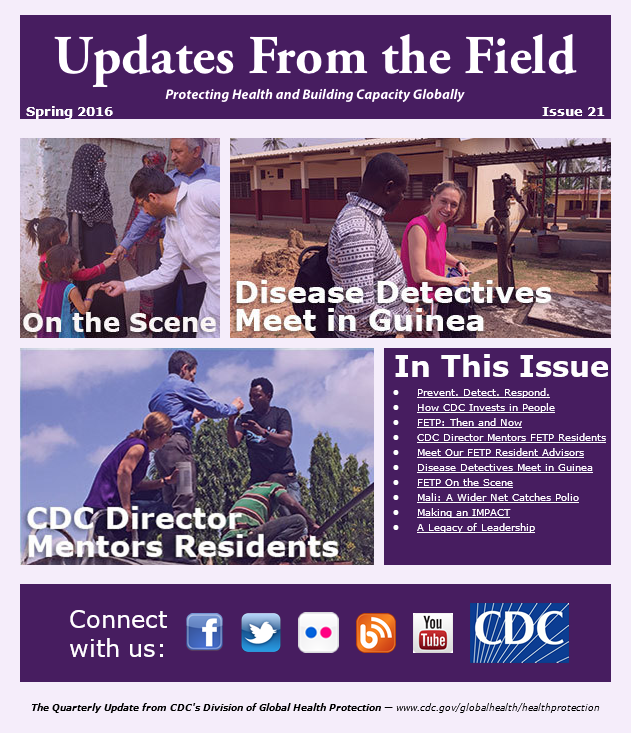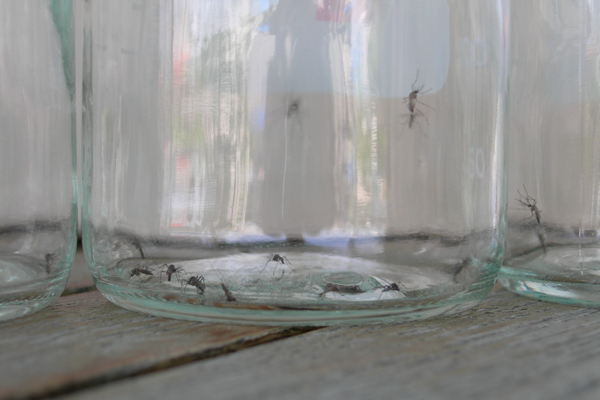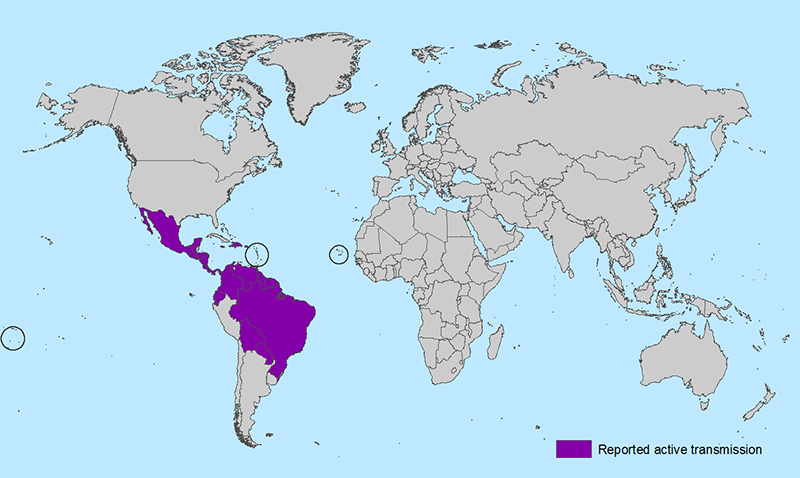|
Preventing Chronic Disease: April 2016 Releases |
|
05/04/2016 |
|

Volume 13 (2016)
Have you seen the recently published articles in
Preventing Chronic Disease (PCD)? Below you will find links to all manuscripts published in
April 2016. Please visit our site at
www.cdc.gov/pcd, where you will find other downloadable articles and information on
PCD.
PCD Releases 2015 Year in Review
The
2015 Year in Review is now available. The Year in Review provides an overview of
PCD's accomplishments for the year 2015. Our success would not be possible without the cooperation of the many dedicated individuals who engage in activities that improve the health and well-being of communities around the globe. We extend our heartfelt
thanks to all who have contributed to PCD's success and will remain committed to bringing their experiences and perspectives together to advance the fields of chronic disease prevention and health promotion.
PCD GIS Snapshots
Did you know that PCD publishes regular GIS Snapshots? These map and text articles feature Geographic Information Systems (GIS) used to display national, state, or county data for important health topics related to chronic disease.
PCD publishes these Snapshots on a regular basis, so check out the
GIS section of our website often for new articles. Interested in submitting your map and research for consideration as a GIS Snapshot? Visit the
For Authors section on our website for more information.
Connect With
PCD on Facebook
Share your favorite PCD articles and updates with friends and colleagues by liking and following the
PCD
Facebook page. Like and share article links, engage with others in the field of chronic disease, and help us spread the word about the importance of health promotion and chronic disease prevention.
The weather is warming up and that means more time outdoors. Share this
e-card to learn tips for protecting your skin and preventing skin cancer.
 PCD
RSS Feed PCD
RSS Feed
How
to Add PCD RSS feeds
Learn
More About RSS
You are receiving this e-mail because you are subscribed to the journal
Preventing Chronic Disease. For information on unsubscribing or changing your e-mail subscription, please consult our
Subscription page. You may also contact us at
[log in to unmask].
|
 |
Table of Contents
|
CME |
|
|
PEER REVIEWED |
|
|
E58:
Integration
of Oral Health Into the Well-Child Visit at Federally Qualified Health Centers: Study of 6 Clinics, August 2014–March 2015 |
|
|
Bernstein J, Gebel C, Vargas C, Geltman P, Walter A, Garcia RI, et al |
 |
|
ORIGINAL RESEARCH |
|
|
PEER REVIEWED |
|
|
E57: What
Rural Women Want the Public Health Community to Know About Access to Healthful Food: A Qualitative Study, 2011 |
|
|
Carnahan LR, Zimmermann K, Peacock NR |
 |
|
ORIGINAL RESEARCH |
|
|
PEER REVIEWED |
|
|
E56:
Characterizing
Adults Receiving Primary Medical Care in New York City: Implications for Using Electronic Health Records for Chronic Disease Surveillance |
|
|
Romo ML, Chan PY, Lurie-Moroni E, Perlman SE, Newton-Dame R, Thorpe LE, et al |
 |
|
ORIGINAL RESEARCH |
|
|
PEER REVIEWED |
|
|
E55:
Initial
Response to Program, Program Participation, and Weight Reduction Among 375 MOVE! Participants, Augusta, Georgia, 2008–2010 |
|
|
Garvin JT, Hardy D, Xu H |
 |
|
BRIEF |
|
|
PEER REVIEWED |
|
|
E54:
Hunger
and Behavioral Risk Factors for Noncommunicable Diseases in School-Going Adolescents in Bolivia, 2012 |
|
|
Romo ML |
 |
|
TOOLS AND TECHNIQUES |
|
|
PEER REVIEWED |
|
|
E53:
Adapting
and Validating the Global Physical Activity Questionnaire (GPAQ) for Trivandrum, India, 2013 |
|
|
Mathews E, Salvo D, Sarma PS, Thankappan KR, Pratt M |
 |
|
EDITOR'S CHOICE |
|
|
PEER REVIEWED |
|
|
E52:
“Well-Being
in All Policies”: Promoting Cross-Sectoral Collaboration to Improve People’s Lives |
|
|
Kottke TE, Stiefel M, Pronk NP |
 |
|
ORIGINAL RESEARCH |
|
|
PEER REVIEWED |
|
|
E51: Cigarette
Smoking and Prostate Cancer Mortality in Four US States, 1999–2010 |
|
|
Jones MR, Joshu CE, Kanarek N, Navas-Acien A, Richardson KA, Platz EA |
 |
|
COMMUNITY CASE STUDY |
|
|
PEER REVIEWED |
|
|
E50: Successes
and Challenges in Implementation of Radon Control Activities in Iowa, 2010–2015 |
|
|
Bain AA, Abbott AL, Miller LL |
 |
|
ERRATUM |
|
|
PEER REVIEWED |
|
|
E49:
Erratum,
Vol. 13, March 31 Release |
 |
|
MULTIMEDIA |
|
|
PEER REVIEWED |
|
|
E48:
Cancer
Incidence and Mortality Through 2020 |
|
|
Weir HK, White MC |
 |
|
ORIGINAL RESEARCH |
|
|
PEER REVIEWED |
|
|
E47:Community-Based
Interventions to Decrease Obesity and Tobacco Exposure and Reduce Health Care Costs: Outcome Estimates From Communities Putting Prevention to Work for 2010–2020 |
|
|
Soler R, Orenstein D, Honeycutt A, Bradley C, Trogdon J, Kent CK, et al |
 |
|
ORIGINAL RESEARCH |
|
|
E46: Effect
of Financial Stress and Positive Financial Behaviors on Cost-Related Nonadherence to Health Regimens Among Adults in a Community-Based Setting |
|
|
Patel MR, Kruger DJ, Cupal S, Zimmerman MA |
|
|
|
|

|
|
ADHD in Young Children: CDC Vitalsigns Report |
|
05/04/2016 |
|
About 75% of young children with ADHD received medicine as treatment.
|
|
|
|
|
|
|
|
|
| Content source: Office of the Associate Director for Communications (OADC)
|

|
|
CDC Around the World: Disease Detectives |
|
05/04/2016 |
|
|
|
|
 |
|
|
|
|
|
Spotlighted Topic of the Week: Disease Detectives |
|
Updates From the Field |
|
PROTECTING HEALTH AND BUILDING CAPACITY GLOBALLY |
|
The CDC Division of Global Health Protection is driven by our commitment to people, science, response, and systems. Of these, the most important is people. The stories in the latest issue of
Updates from the Field clearly illustrate this commitment to people—stories of inspiring mentorship, innovative training programs, teamwork in the field, and accelerating the Global Health Security Agenda—proving that when health threats strike, a well-trained
workforce can make all the difference…Read
the latest issue
|
|
 |
|
Blog of the Week |
|
A RAY OF HOPE FOR A BETTER-PREPARED ETHIOPIA |
|
|
|
 |
|
Infographic of the Week |
|
|
 |
|
Video of the Week |
|
TEPHINET: THE GLOBAL FETP NETWORK |
|
"Firemen prevent fires. Epidemiologists prevent epidemics…" Watch
video
|
|
 |
|
Story of the Week |
|
NEIGHBORS UNITE TO FIGHT ZIKA ACROSS THE AMERICAS |
|
“Central America is unique in that everyone is close to each other. If there’s an emergency in Guatemala, it is likely that an outbreak in Honduras or El Salvador will soon follow,” says Luis Hernandez…Read
story
|
|
 |
|
|
CDC Zika Updates |
|
Latest
Outbreak Info
On January 22, 2016, CDC activated its Incident Management System and, working through the
Emergency Operations Center (EOC), centralized its response to the outbreaks of Zika occurring in the Americas and increased reports of birth defects and Guillain-Barré syndrome in areas affected by Zika. On February 1, 2016, the World Health Organization
declared a
Public Health Emergency of International Concern (PHEIC) because of clusters of microcephaly and other neurological disorders in some areas affected by Zika. On February 8, 2016, CDC elevated its response efforts to a Level 1 activation, the highest response
level at the agency.
CDC is working with international public health partners and with state and local health departments to
- Alert healthcare providers and the public about Zika.
- Post
travel notices and other travel-related guidance.
- Provide state health laboratories with diagnostic tests.
- Monitor and report cases of Zika, which will helps improve our understanding of how and where Zika is spreading.
Zika
and Sexual Transmission
Areas
with Zika
|
|
More
resources on the CDC Zika website »
|
|
In the News |
|
The
End Of Polio Is Within Reach. Here’s What Workers Are Doing To Finish The Fight.
A Plus
April 26, 2016
Top
stories for World Immunization Week
Helio Infectious Disease News
April 26, 2016
United
States Train Detectives to Investigate Disease Outbreaks
Vietnam U.S. Embassy
April 22, 2016
Strong
labs save lives in the fight against HIV and TB in Africa
ONE
April 20, 2016
Is
U.S. prepared for next disease outbreak?
WPTZ
April 19, 2016
Health
officials to begin new global effort to eradicate polio
PBS NewsHour
April 16, 2016
Funding
Opportunity: Operations Research (Implementation Science) for Strengthening Global Health Protection Implementation Department of Health and Human Services
Grants.gov
April 15, 2016
|
|
On the Calendar |
|
May 3: World
Asthma Day
May 10: World
Lupus Day
May 12: International
Nurses Day
May 15:
International Day of Families
May 17: World
Hypertension Day
|
|
Sign Up for This Newsletter! |
|
This free newsletter is sent out regularly by the CDC Center for Global Health.
Sign up today to receive these newsletters directly in your inbox!
|
|
|
|
|
 |
 |
 |
 |
|

|
|
CDC Science Clips, Vol. 8, Issue 18, May 3, 2016 |
|
05/04/2016 |
|
You are subscribed to Science Clips for Centers for Disease Control and Prevention (CDC). This information has recently been updated, and is
now available.
Welcome to Science Clips, CDC’s weekly scientific digest.
This week, Science Clips is pleased to collaborate with CDC Vital Signs by featuring scientific articles from the May Vital Signs on ADHD in Young Children (www.cdc.gov/vitalsigns).
The articles marked with an asterisk are general review articles which may be of particular interest to clinicians and public health professionals seeking background information in this area.
The full issue of Science Clips, including CDC-authored publications, is posted at
http://www.cdc.gov/library/sciclips/issues/.
CDC Vital Signs - Attention Deficit Hyperactivity Disorder in Young Children
- *ADHD:
clinical practice guideline for the diagnosis, evaluation, and treatment of attention-deficit/hyperactivity disorder in children and adolescents Wolraich M, Brown L, Brown RT, DuPaul G, Earls M, Feldman HM, Ganiats TG, Kaplanek B, Meyer B, Perrin
J, Pierce K, Reiff M, Stein MT, Visser S. Pediatrics. 2011 Nov;128(5):1007-22.
- *Psychopharmacological
treatment for very young children: contexts and guidelines Gleason MM, Egger HL, Emslie GJ, Greenhill LL, Kowatch RA, Lieberman AF, Luby JL, Owens J, Scahill LD, Scheeringa MS, Stafford B, Wise B, Zeanah CH. J Am Acad Child Adolesc Psychiatry. 2007
Dec;46(12):1532-72.
- Diagnostic
experiences of children with attention-deficit/hyperactivity disorder Visser SN, Zablotsky B, Holbrook JR, Danielson ML, Bitsko RH. Natl Health Stat Report. 2015 Sep 3(81):1-7.
- Treatment
of attention deficit/hyperactivity disorder among children with special health care needs Visser SN, Bitsko RH, Danielson ML, Ghandour RM, Blumberg SJ, Schieve LA, Holbrook JR, Wolraich ML, Cuffe SP. J Pediatr. 2015 Jun;166(6):1423-30 e1-2.
- Treatment
sequencing for childhood ADHD: A multiple-randomization study of adaptive medication and behavioral interventions Pelham WE, Fabiano GA, Waxmonsky JG, Greiner AR, Gnagy EM, Pelham WE, Coxe S, Verley J, Bhatia I, Hart K, Karch K, Konijnendijk E,
Tresco K, Nahum-Shani I, Murphy SA. J Clin Child Adolesc Psychol. 2016 Feb 16:1-20.
- Comparative
cost analysis of sequential, adaptive, behavioral, pharmacological, and combined treatments for childhood ADHD Page TF, Pelham Iii WE, Fabiano GA, Greiner AR, Gnagy EM, Hart KC, Coxe S, Waxmonsky JG, Foster EM, Pelham WE. J Clin Child Adolesc Psychol.
2016 Jan 25:1-12.
- Safety
and tolerability of methylphenidate in preschool children with ADHD Wigal T, Greenhill L, Chuang S, McGough J, Vitiello B, Skrobala A, Swanson J, Wigal S, Abikoff H, Kollins S, McCracken J, Riddle M, Posner K, Ghuman J, Davies M, Thorp B, Stehli
A. J Am Acad Child Adolesc Psychiatry. 2006 Nov;45(11):1294-303.
- Trends
in the parent-report of health care provider-diagnosed and medicated attention-deficit/hyperactivity disorder: United States, 2003-2011 Visser SN, Danielson ML, Bitsko RH, Holbrook JR, Kogan MD, Ghandour RM, Perou R, Blumberg SJ. J Am Acad Child
Adolesc Psychiatry. 2014 Jan;53(1):34-46 e2.
- Economic
impact of childhood and adult attention-deficit/hyperactivity disorder in the United States Doshi JA, Hodgkins P, Kahle J, Sikirica V, Cangelosi MJ, Setyawan J, Erder MH, Neumann PJ. J Am Acad Child Adolesc Psychiatry. 2012 Oct;51(10):990-1002 e2.
- Attention
deficit hyperactivity disorder: Effectiveness of treatment in at-risk preschoolers; long-term effectiveness in all ages; and variability in prevalence, diagnosis, and treatment Charach A, Dashti B, Carson P, Booker L, Lim CG, Lillie E, Yeung E,
Ma J, Raina P, Schachar R. 2011 Oct.

|
|
|

PCD RSS Feed



